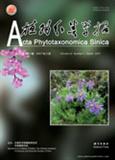LI Xiao-Xian, ZHOU Zhe-Kun
Two chloroplast (matK and rbcL), and one nuclear (18S) genes from 86 families, 126 genera, and 151 species of angiosperms (including 58 families, 86 genera, and 101 species of monocots), representing all major lineages of monocots and the basal angiosperms, were analyzed using parsimony methods. The eumagnoliids composed of Magnoliales, Laurales, Canellales, and Piperales appear as sister to the whole monocots. The monophyly of monocots receives 98% bootstrap support in the combined analyses of three genes. The monophylies of nine clades of monocots (Alismatales s.l., Dioscoreales, Pandanales, Asparagales, Liliales, Arecales, Poales, Zingiberales, and Commelinales) and six clades of other angiosperms (Nymphaeales, eudicots, Magnoliales, Laurales, Piperales, and Canellales) were supported in the strict consensus tree of combined analyses. The results showed that the genus Acorus is the basalmost clade among extant monocots, followed by Alismatales s.l. (including Araceae and Tofieldiaceae). Petrosaviaceae are placed as a sister group of the clade comprising the Dioscoreales-Pandanales clade, Asparagales, Liliales and commelinoids. The sister-group relationships are strongly supported between Petrosaviaceae and the remaining monocots (except for Acoraceae and Alismatales s.l.), between Dioscoreales and Pandanales, and between Commelinales and Zingiberales in the combined analyses of two genes and three genes. However, the phylogenetic relationships among Asparagales, Liliales and commelinoids are still uncertain in current analyses. In commelinoids, the relationships of Arecales and Poales still need more research in future. Furthermore, it is noteworthy that the sister relationship between Petrosaviaceae and the remaining monocots (except for Acoraceae and Alismatales s.l.) and the monophylies of Dioscoreales and Asparagales were strongly supported with bootstrap values more than 90%, which generally received bootstrap values less than 50% in the previous studies. Considering the special position of Acoraceae and Petrosaviaceae, we support the taxonomical treatment of Acoraceae and Petrosaviaceae in their own order Acorales and Petrosaviales.

